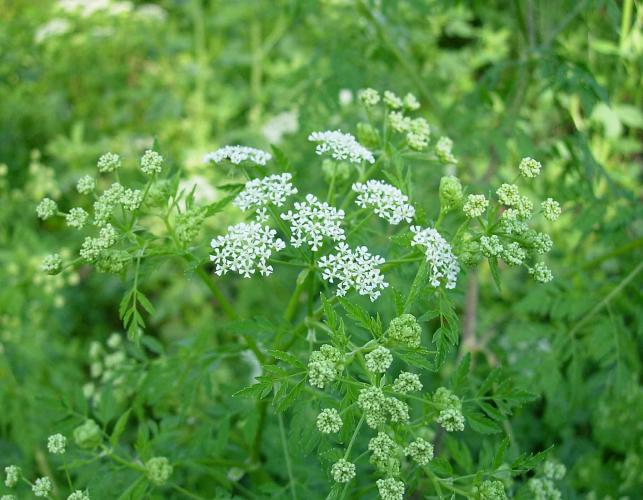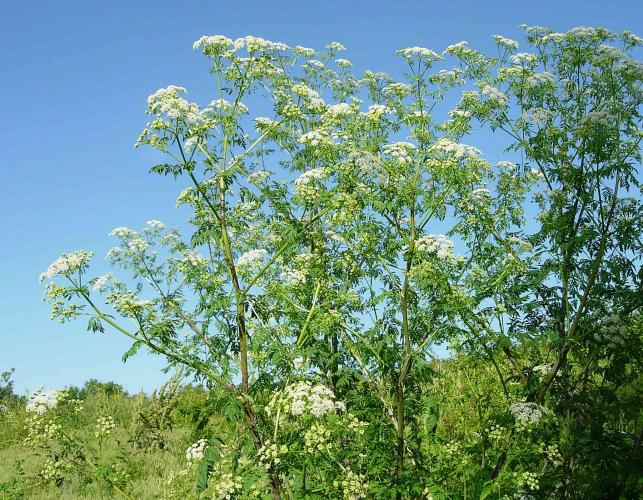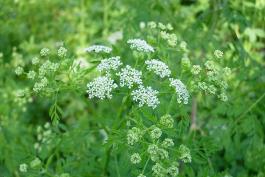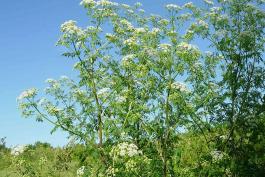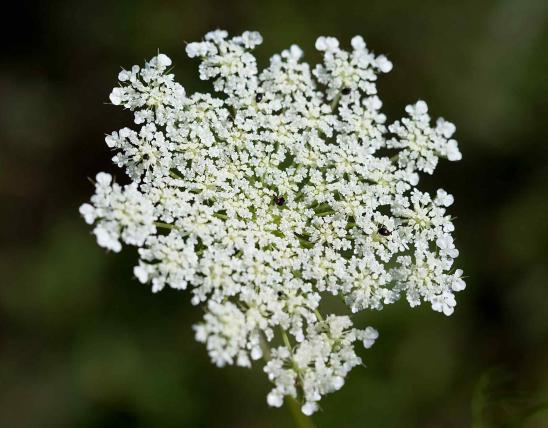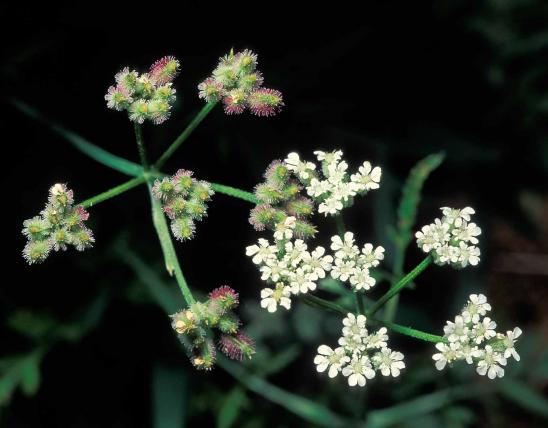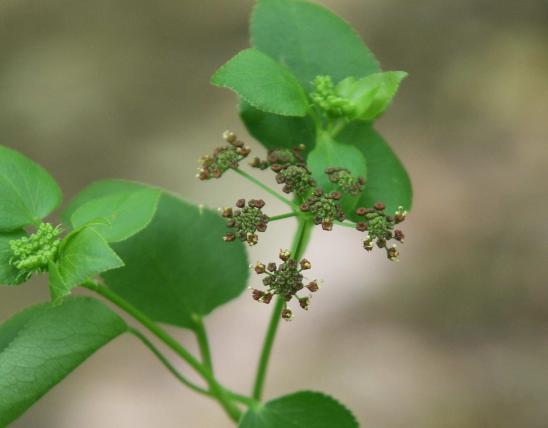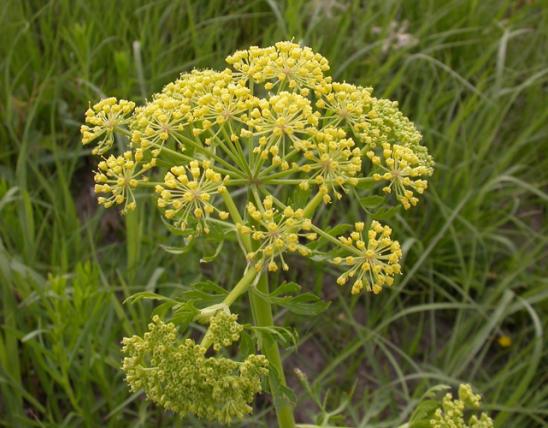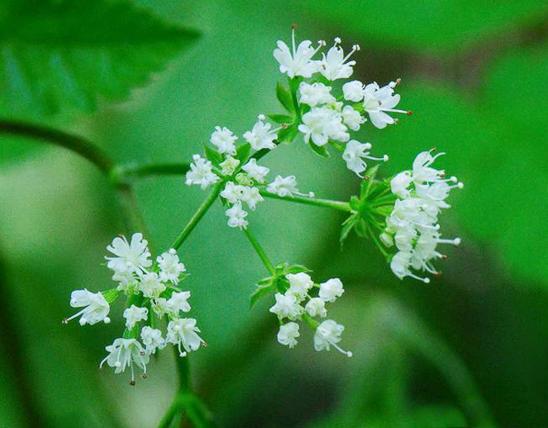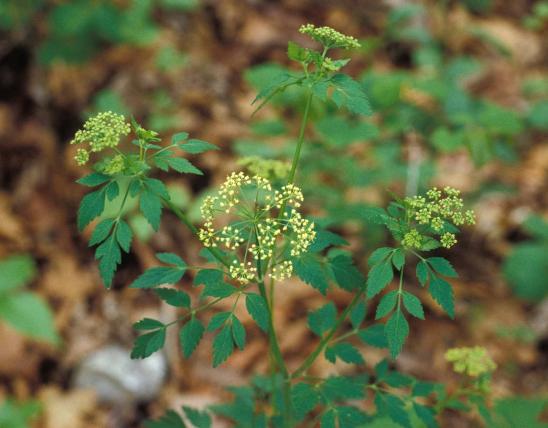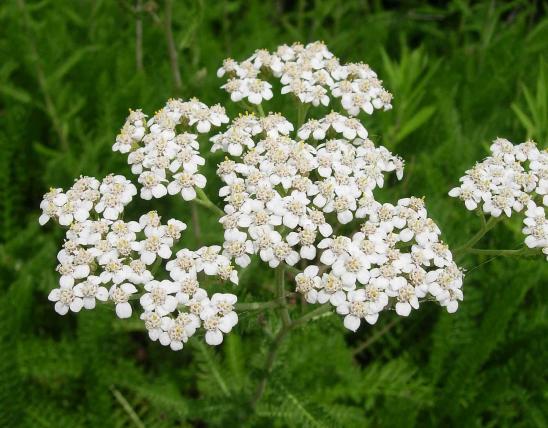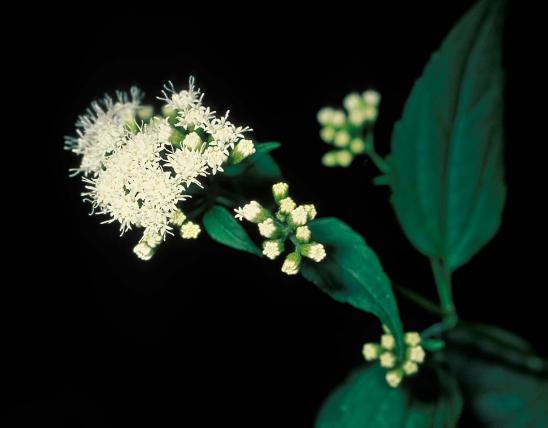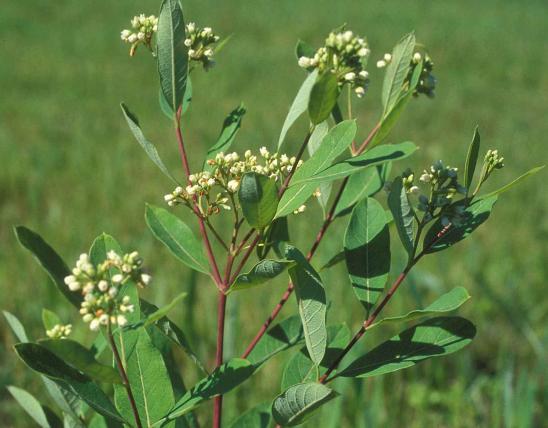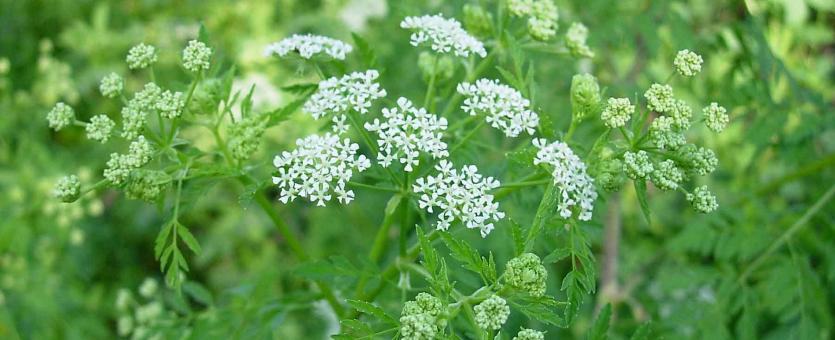
A tall, vigorous perennial plant with many leafy branches, usually streaked or spotted with purple, hairless. Flowers minute, with 5 petals, white, in compound umbels 2–5 inches across, surmounting the leafy shoots. Blooms May–September. Leaves compound, the lower ones to 1 foot long. Leaflets linear to lanceolate, ovate with coarse teeth, but sometimes without them.
Because this plant is extremely toxic, while other close relatives are considered edible, correct identification is critical for anyone wishing to eat "wild edibles." Water hemlock has doubly-compound leaves and the leaflets are large and rarely lobed. The veins that extend laterally from the leaflet midveins end mostly in the sinuses between the teeth (and not at the points of the teeth). If you are inexperienced with plant identification, it is best to consider all wild members of the carrot family as potentially fatally toxic.
Height: to 6 feet.
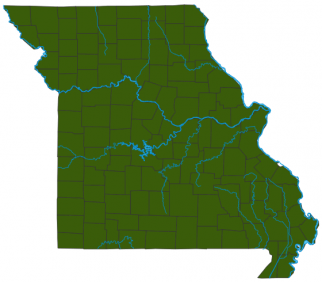
Statewide.
Habitat and Conservation
Occurs in any wet situation in bottomlands: sloughs, banks of streams, rivers and spring branches, margins of ponds and lakes, bottomland prairies, moist depressions of upland prairies, openings of bottomland forests; also roadsides, railroads, and ditches. This is perhaps the most poisonous of all North American plants, and it is widespread and common. All parts are toxic. Cattle are often the victims.
Human Connections
All parts of this plant are toxic if eaten. The most toxic parts are the tuberous roots, swollen lower stems, and new growth. When livestock consume even a little of the plant, either fresh or as a contaminant in hay, they can die within 15 minutes. Poisoned people can suffer similarly.
Ecosystem Connections
Several insects visit the flowers for nectar. Because it is so toxic, few animals eat this plant. Ingesting just a small amount can kill a cow. The caterpillars of black swallowtail butterflies eat the leaves, however, and transfer the toxicity to their own bodies; predators learn not to eat them.
